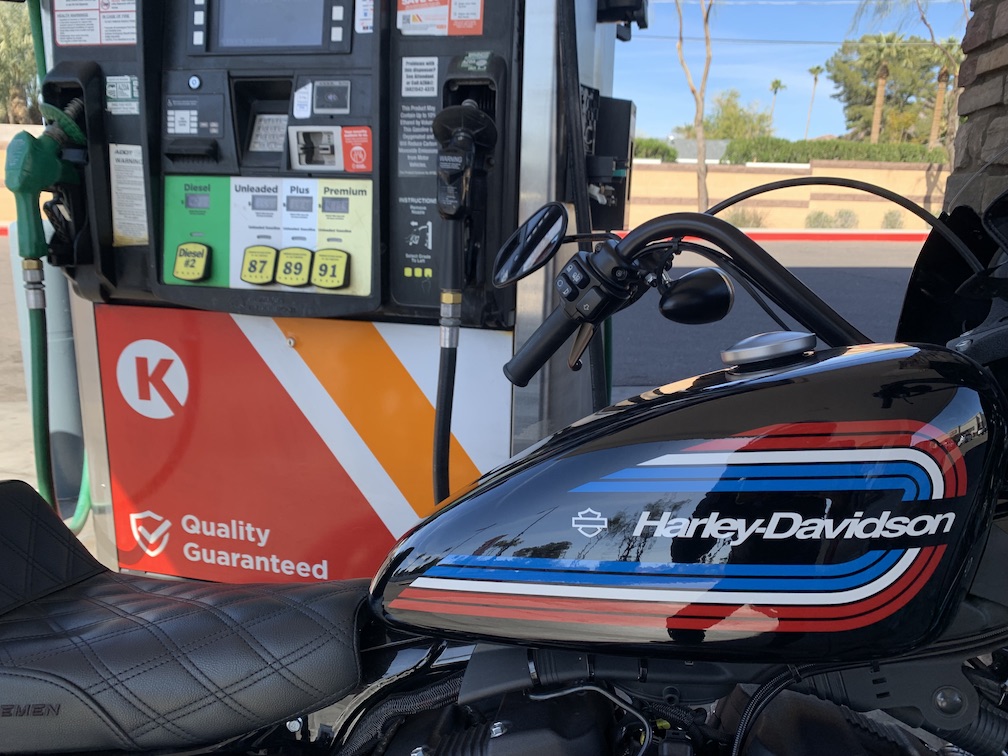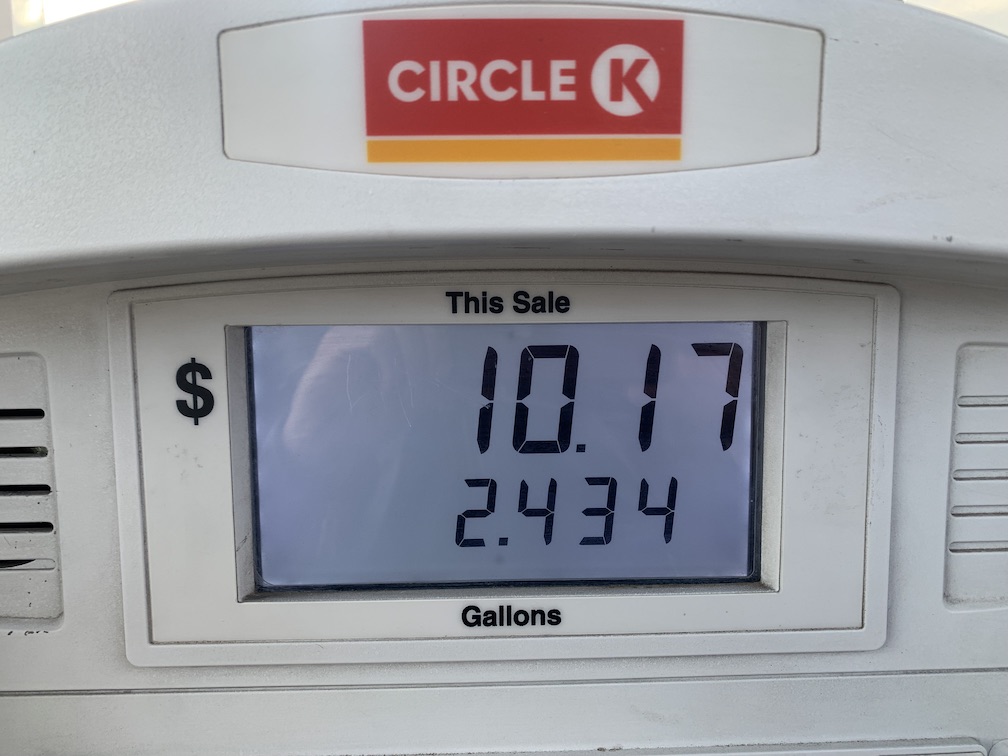posted: February 25, 2023
tl;dr: An appreciation of the gasoline-powered internal combustion engine on my Harley...
One of the many joys of riding a motorcycle is refueling it. After a fun time roaring around back-country roads, I pull into a gas station when my fuel indicator and/or trip odometer says it is time for a refill. I bring the Harley to a stop next to the pump, remove the gas cap, put the cap on top of the pump, and go through the credit card authorization process. Sometimes I go inside and pay cash. I select high-grade 91 octane, aim the nozzle into the tank, and fill the tank until I can see the clear liquid at the top. I replace the nozzle and the gas cap, then assess the damage. The entire process takes about three minutes.
Even with the runup in gasoline prices due to the inflation of the 2020s, the damage is minimal. With gas currently at around $4/gallon, I’m typically buying 2.5 gallons for around $10. My two Harleys each get a bit under 50 miles to the gallon. That $10 buys me 100 miles or two to three hours of fun, depending on how many stops I make to enjoy the scenery or the company that I ride with. It’s an incredible bargain, especially when compared to a gasoline-powered car. I can’t help but smile as I pull away from the pump.

How much longer will it be possible to fill up my Harley for around $10?
Gasoline, a petroleum-based fuel, is an amazing way to power a vehicle; it’s no wonder that mankind has used it extensively for this purpose. It has a high energy density, is a liquid at normal temperatures, and is itself easy to transport and store, on land and on sea. When it comes to refueling a vehicle, these are indeed the good old days: it will never be better than it is right now. Hence this blog post: I wanted to record my thoughts for posterity, in the moment, before the world changes.
Are we really going to get rid of all petroleum-fueled vehicles and devices? I don’t think the people pushing this agenda fully realize the wide range of different applications involved. Some are much more difficult to arrange substitutes for than others. Airplanes are the most obvious: battery-powered aircraft are nowhere near capable of the speeds and capacity of today’s passenger jets. Some would like high-speed rail to replace over-land airplane flights, but California’s attempt to build a train line between its two biggest metropolitan areas is a national joke. For over-water flights, are the rich and powerful who can afford intercontinental travel going to put up with the leisurely speed of blimps? Perhaps a plane can be built with a liquid or gas fuel that does not produce carbon dioxide when burned, but the Hindenburg and Challenger disasters show the dangers of hydrogen-powered aircraft.

2.4 gallons at $4.179/gallon buys a lot of fun
Focusing on ground-based transport, some uses of cars and motorcycles are much more amenable to electrification than others. An electric vehicle makes the most sense when it is used to make short trips around town, always returning to its home base every evening for a charging cycle. Take a multi-day trip with such a vehicle and you create the need for a nationwide network of charging stations, and incur the wait each time the vehicle’s energy source must be replenished. Some motorcyclists use them for commuting, in which case an electric motorcycle can make sense: Harley-Davidson has its LiveWire, and other manufacturers make them too, of course. But I and most of the folks I ride with use their motorcycles for getting far out of town and seeing the countryside, or going on longer multi-day trips. Are there really going to be charging stations in tiny crossroad towns in rural Arizona that can rapidly power-up a group of 20 hogs out for a weekend ride?
Power equipment used in remote locations far from the nearest town presents an even bigger challenge. Consider the case of loggers felling trees in a remote forest: are electric chainsaws feasible? Until the energy density of batteries can approach that of gasoline, the loggers are going to have to bring a large number of battery packs with them. The U.S. Army has relied upon battery-powered electronics for battlefield communications for decades, but are they really going to handicap themselves with battery-powered tanks as they attempt to defend our nation’s interests?
As is often the case in large, complex systems, some use cases are much more amenable to a new solution than others, hence the expression about picking the low-hanging fruit first. Getting to 100% involves significant effort for minimal payoff, hence the warning about reaching the point of diminishing returns. When it comes to recreational motorcycling and other power sports, plus equipment used in remote off-the-grid locations and on the battlefield, the returns aren’t going to be worth it.